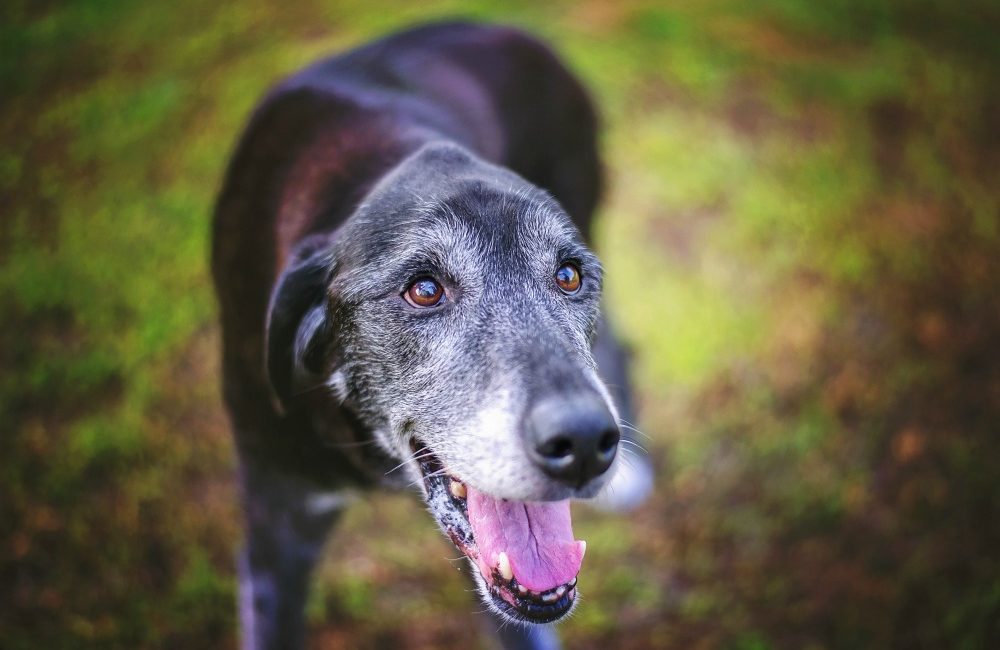When talking with clients who have senior pets, the biggest comment I hear is, “They are much too old to be under anesthetic.” I want to help put your mind at ease in regards to that concern. One of our favourite sayings here at Hillcrest is, “Age is not a disease.” And it’s true! Just because your pet is older, does not mean that they are sick! Yes, older pets are more prone to developing diseases and more health concerns compared to their younger counterparts. That is why we have lots of protocols and recommendations to help screen and monitor for any concerns prior to using anesthetic in senior pets.
So, what exactly do we do that helps keep your pet safe under anesthetic? It all starts with a physical exam by a veterinarian. During that physical exam, they are going to listen to your pet’s heart and lungs to check for any abnormalities. They’ll examine their teeth, skin, joints, musculature, nervous system, weight, eyes and ears. If you have any other concerns like new lumps or bumps, they will check those out too.
After your pets physical exam, we will discuss running pre-anesthetic blood work to screen for any internal changes with your pet’s liver or kidneys. We are also making sure that there are no signs of anemia (lack of red blood cells), that their platelet levels are okay (so we know they have a good ability to clot and heal after surgery), and that their white blood cell levels are okay. We always recommend having pre-anesthetic blood work done for every pet no matter how old they are, it’s just as important in our young pets as it is in our senior pets. A doctor will read the results from the blood work and discuss their findings with you. If there are any changes in the blood work, we will then be able to tailor our sedation protocols to best suit your pets needs. Some pets require more fluids during surgery and others require less depending on what is found during their physical exam and blood work. Others may require different pain relief medications if there are changes to their kidney values. Even if your pet has a medical condition, that doesn’t always automatically make them unfit for surgery. It is up to the doctor to determine how mild or severe the condition is and whether they are a good candidate for anesthetic and surgery.
All of these things are done prior to your pet’s procedure. On the morning of surgery, your pet will receive another full physical exam before they are given any sedation. If there are any concerns that a doctor has, a discussion will be had with you prior to proceeding further. Once your pet is sedated and intubated a technician will begin to monitor your pet’s vitals, such as heart rate, respiration rate, temperature, oxygen levels, anesthetic levels, and blood pressure. These vital signs are monitored and tracked frequently so if there is anything that is out of the ordinary a technician can make necessary adjustments and bring any concerns to the doctor’s attention.
We try to make our procedures as quick and efficient as possible. But sometimes due to the type of procedure, we may opt to separate it into two parts. This is common in dental procedures that require many extractions and in lump removals where there are multiple large masses. Many people are concerned that having their pet put under anesthetic twice poses a greater risk to their health, but it is actually the opposite. Having your pet put under anesthetic in two shorter time periods versus one long procedure is actually much safer. Long periods of anesthetic are sometimes unavoidable due to the surgery but when we can, we always do what’s best for your pet’s health. When doing two-part procedures, we like to separate them by at least two weeks, so your pet has time to recover and heal from the first procedure.
We understand that leaving your pet with us for the day or even overnight can be stressful and scary. We are pet owners too and we know exactly how you feel. Our pets are our children with four legs and fur, they are family and we want the best for them. If you have any questions about your pets procedure, the anesthetic, or our monitoring equipment, please don’t hesitate to ask! We want to make sure that you are as comfortable as possible when you leave. You are trusting us with your pets care so it’s important to us that you feel comfortable with every aspect of their stay here.
Written by: Kelsey Hewgill, RVT




